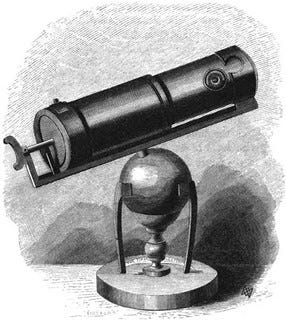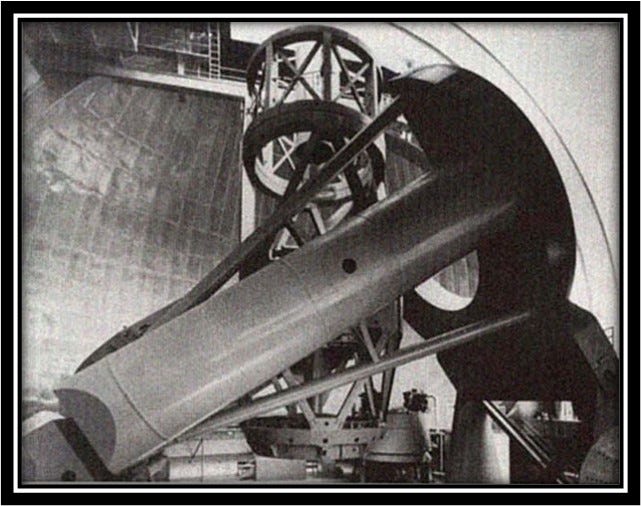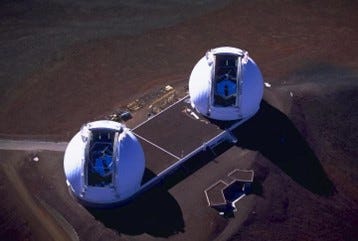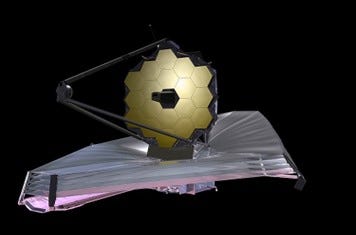# The Evolution of Telescopes: From Galileo to the James Webb
Written on
Chapter 1: The Mysterious Origins of the Telescope
The true origin of the telescope remains shrouded in mystery. The first patent for this revolutionary device was submitted in 1608 by Hans Lippershey, a Dutch spectacle maker. Legend has it that Lippershey was inspired by watching two children play with lenses in his shop. When they held two lenses at just the right distance, they could magnify distant objects. Some argue that credit should go to the children, though their names have faded from history.
Lippershey wasn't alone in this innovation; neighboring spectacle maker Zacharias Jansen and Dutchman Jacob Metius also claimed to have invented the telescope. However, Lippershey's patent application is the earliest recorded evidence, leading most historians to attribute the invention to him.
While the origins of the telescope may be uncertain, its evolution is well documented. In 1609, the Italian scientist Galileo Galilei learned of this new instrument and quickly built his own version. Galileo significantly enhanced the device's magnification capabilities, increasing it from three times to as much as thirty times. He used his telescope to explore the night sky, leading to groundbreaking discoveries that transformed humanity’s understanding of the cosmos, including the observation of lunar mountains and craters, the moons of Jupiter, and the phases of Venus.

Chapter 2: Galileo's Contributions and Challenges
Galileo's observations supported the heliocentric model proposed by Copernicus, yet his findings were met with resistance from the Church, resulting in his house arrest for the remainder of his life. Although many advancements were made to the telescope following Galileo's time, it became evident that refracting telescopes had limitations.
The difficulty of manufacturing large lenses posed significant challenges, especially in pre-industrial societies. The size of the lenses impacted their performance, as larger telescopes could capture dimmer objects, but the weight of these lenses made large refractors cumbersome and prone to chromatic aberration.
In 1668, Isaac Newton addressed these issues by inventing the first reflecting telescope, known as the Newtonian reflector. By utilizing a concave mirror to collect and magnify light, Newton simplified the construction of large telescopes, eliminating many problems associated with lenses. His innovation not only earned him recognition but also paved the way for monumental scientific discoveries.

Chapter 3: Innovations in Telescope Design
Newton's design enabled the construction of increasingly larger telescopes, facilitating the observation of distant galaxies and nebulae. In 1948, the Hale Telescope at Palomar Observatory in California, with its 200-inch mirror, was the largest telescope in the world until 1993. This telescope significantly contributed to our understanding of the universe, including the distance to the Andromeda Galaxy and the composition of various distant stars.

Despite the challenges in casting larger mirrors, astronomers continued their quest for knowledge. The W. M. Keck Telescopes, completed in 1993 and 1996 in Hawaii, each feature mirrors over 393 inches in diameter, constructed from 36 hexagonal segments. These telescopes have been instrumental in numerous discoveries, including the first exoplanet and confirmation of the existence of a black hole in our galaxy.

Chapter 4: The James Webb Telescope
Currently, the Gran Telescopio Canarias in Spain holds the title of the largest telescope, with a primary mirror measuring 409 inches across. This innovative design also inspired the construction of the James Webb Space Telescope, which began operations earlier this year.

The Webb Telescope has already showcased its remarkable capabilities, detecting what is believed to be the oldest galaxy, estimated to be 13.5 billion years old. The light from this galaxy has shifted into the red spectrum, allowing astronomers to calculate its distance and offering a glimpse into the universe's early stages. As noted by Jeffrey Kluger, “A team led by astronomer Rohan Naidu of the Harvard Center for Astrophysics detected a galaxy with a shift that fixes it at the 13.5-billion-year point.”
Despite the advancements in telescope technology since Galileo's time, their primary function remains unchanged: to serve as instruments of discovery. Regardless of how they evolve, telescopes will continue to be essential tools in our quest to understand the cosmos and expand the boundaries of human knowledge.
If you found this article insightful, consider following me on Medium to support my work. Thank you for your encouragement.